Last year, you may have started to notice a small update on your Instagram profile. In the top right, next to the ‘add a post’ button, appeared a squiggly ‘A’ (very similar to an ‘at’ symbol). That was how we – collectively – were introduced to Meta’s new social media app, Threads.
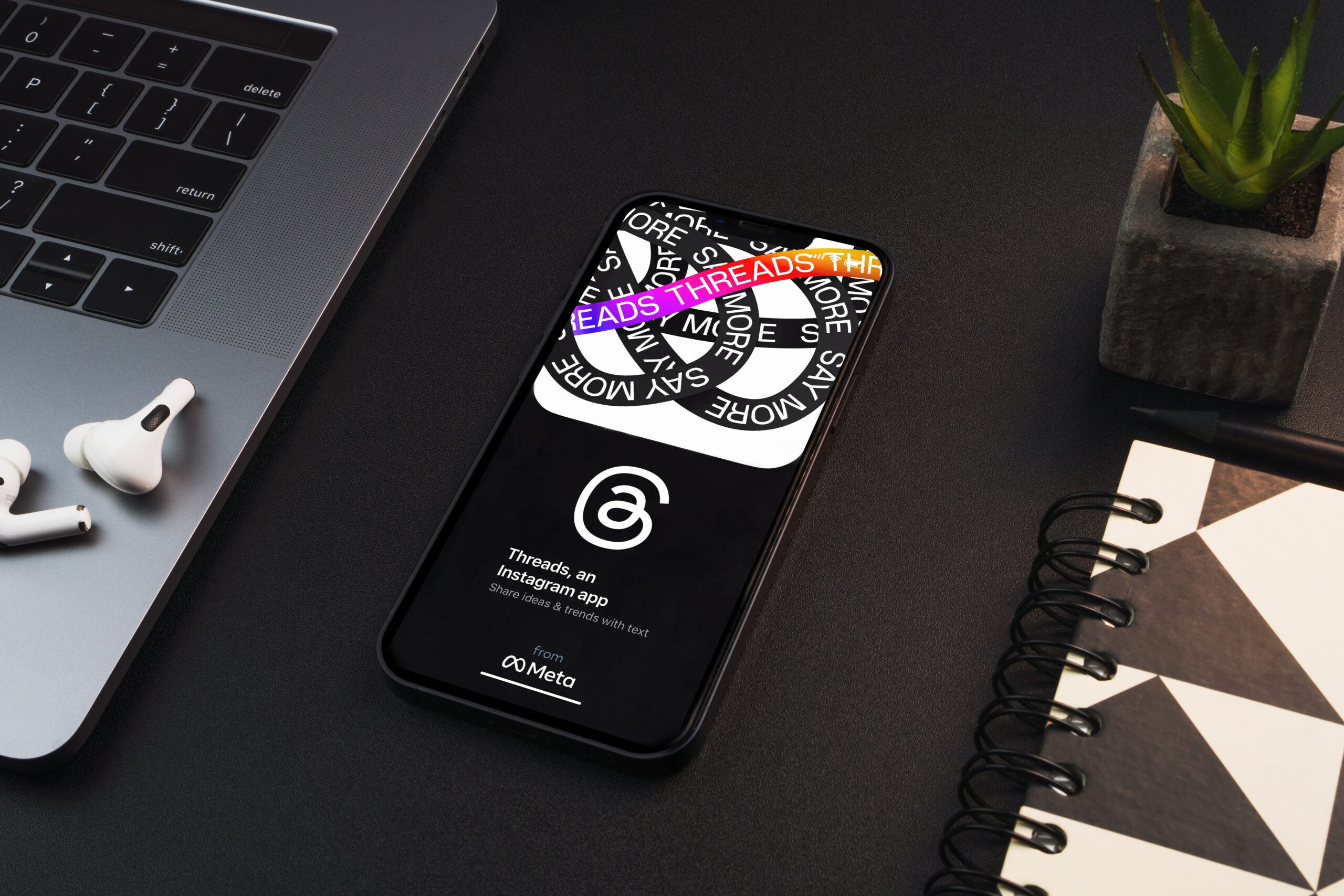
Threads is an app where you can view and share public conversations. Depending on how you use Threads, you can also post threads, reply to others and follow profiles you’re interested in. Threads and replies can include short pieces of text, links, photos, videos or any combination of these content types.
While Instagram is predominantly made up of video- and image-based content, Threads is – as Instagram says – a new way to share with text. The interface itself is remarkably similar to Twitter (or X), with a few differences. For example, Twitter posts have a 280-character limit, whereas Threads has a 500-character limit. Most notably, at this time, Threads does not allow for paid advertising; however, there is buzz that paid advertising will roll out on Threads in 2024, so ads may be just around the corner.
While advertising isn’t currently available on the platform, there are a number of reasons why businesses should set up a Threads account and start incorporating Threads into their content calendars.
1. Own Your Name
Like any social platform, you must create a username and profile when you set up your Threads account. If you wait too long to set up your profile, your company name could get snagged by someone else. Even if you don’t plan to use your profile initially, set up a private Threads account in your business name so you don’t run into issues in the future.
2. User Preference
Often, businesses think they know where their audience is spending their time online. If you’re a B2B company, you may think LinkedIn is the best place to reach your target audience. And yes, this could be true, but it doesn’t negate the fact that your audience (or at least a fraction of your audience) may prefer other social platforms for news updates and interacting with the latest content. So, why not expand your reach to Threads? Introducing a new social platform to your content mix won’t hurt your follower count or your social reach on existing platforms. In fact, it will only do the opposite. Expand your social footprint to Threads and potentially open your business up to new customers.
A simple way to kickstart your Threads account is to recycle your strongest-performing, timeless tweets that have proven to do well among your key audiences. As noted earlier, Twitter and Threads are remarkably similar, focusing on text-based posts that can spur conversation. Take what you’ve learned from Twitter and see how it performs on Threads! Just make sure that any recycled tweets are still relevant, and align with your core audience.
3. Interact, Engage, Expand
Threads is a great social platform to interact with current – and potential new – customers. Ask your Threads followers a question that sparks conversation, or encourage users to share their experiences with your products or services. You could even make Threads the go-to platform for exclusive updates and news around your product, with teasers on Instagram and Facebook to lure users onto your Threads page. The beauty of Threads is that it’s a new social platform; there’s no cookie-cutter way to use it yet. Make Threads your own! Test unique content, foster open dialogue with your audience…. you could even go back to your social slush pile and see if something that didn’t work out on one platform works on Threads.
The introduction of a new social platform for marketers is always daunting. A new platform usually means more content, and more work. But it can also be exciting! It’s a new way of interacting with your customers – both current and new. We strongly recommend setting your business up with a Threads account if you haven’t already, and start incorporating the platform into your social content calendars. And once Threads opens up to advertising, your account will be well-established and set up for success!
Ready to take your marketing to the next level? Contact Bluetext to learn about our digital orchestration and organic social services and how each can be tailored to your business’ objectives.
Data privacy features can be overwhelming. Every time you visit a new site, you’re immediately prompted with the same spiel: “Hey! Is it okay if we take your data?” You probably click ‘yes’ just to get rid of the annoying pop-up.
But what happens when you click yes? How are publishers using your data? How are we — the consumer AND the advertiser — affected by these data protection policies?
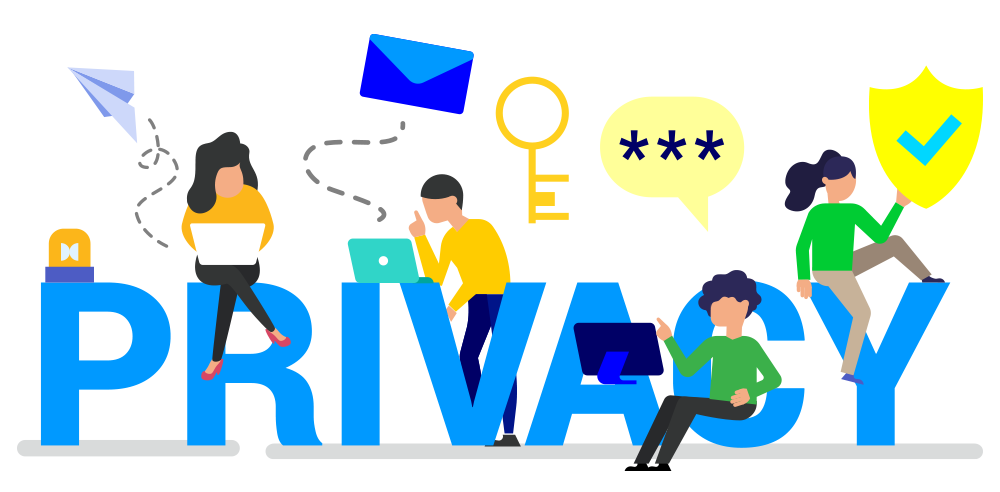
Understanding Data Protection Policies
Data protection policies really started to emerge and take force in the past several years. The most widely known data protection policy is the General Data Protection Regulation (GDPR), which was implemented in 2018. GDPR, in short, is “a legal framework that sets guidelines for the collection and processing of personal information from individuals who live in the European Union.” You can learn all about GDPR and what exactly the regulation covers on the official GDPR site.
But say you are an American-based company, are you affected by data privacy regulations? Just months after GDPR was enforced, the California Consumer Privacy Act (CCPA) was launched. Similar to GDPR, “CCPA outlines how businesses can collect, store and transfer consumer data from Californian residents.” You can find out more about what the Act covers on the official CCPA site.
The launch of these two acts threw many users and advertisers for a loop. For starters, if users are visiting your site from California or Europe, your site must be compliant. And let’s not forget one of the hallmarks of the “worldwide web” — the ability to connect users across physical boundaries. Remember the pop-up boxes and prompts we talked about earlier? Those were implemented across sites based on these new data privacy laws. In order for websites to be compliant, there has to be an explicit opt-in consent message that appears as soon as users visit a site, and no data can be collected unless the end-user opts in. This is a change from traditional advertising regulations in America, which required the option to opt-out (does the “unsubscribe” button sound familiar?). If a company fails to comply with these policies, it could “face a fine. In most serious cases, this fine could be up to 17 million euros or 4% of a company’s annual turnover.”
Data privacy acts are no joke! It’s imperative that companies follow the correct guidelines to ensure sites remain compliant — both for the company’s sake and the consumer’s sake.
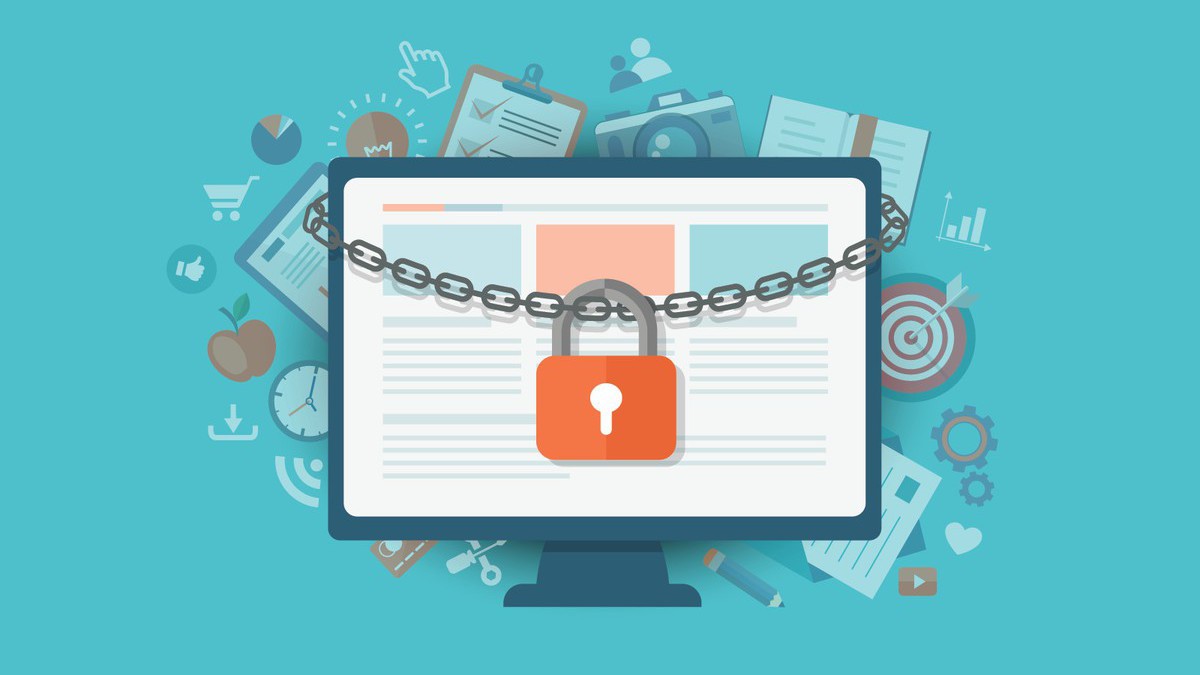
What Consumers Should Consider
The next time you are prompted with a consent message, just remember: if you click ‘yes,’ you are giving that company permission to collect and use your data. If this sounds eerily vague and leaves you questioning what a company wants from your data, you’re not alone. We encourage users to navigate to the privacy policy pages on sites before opting in; this way, you’ll know exactly how companies will use your data if you choose to click ‘yes.’
While “collecting data” sounds like a serious invasion of privacy, it’s worth noting that most companies only scrape the surface of data — data is usually anonymized and does not reflect any personally identifiable information (PII). Most companies know the importance of building trust with their consumers, especially as data privacy is at the forefront of most digital conversations. For this reason, companies are usually transparent in their privacy policy — showcasing exactly what data will be collected — and how that data will be used. Again, when in doubt, check out the site’s privacy policy page!
Many consumers have found that checking the ‘yes’ box does have its advantages. Have you ever visited an eCommerce site, eyeing a particular product, but passed because of the price tag? Many marketers set up retargeting campaigns — which are only activated if users accept the privacy policy — that enable them to serve product ads to users who leave the site without purchasing. If you’ve opted into the privacy policy, you might start to see ads of the product you wanted to purchase (or similar), and in some cases, a nice discount code will appear with the ad! In many cases, customers value the reminder to checkout their online cart and especially enjoy saving money in the process.
Another less obvious example is user experience. Websites will use consumer data to help create a more seamless experience for the end-user by understanding what the user is most interested in. We say this is ‘less obvious’ because when done right, you might think that the website is answering all your questions and solving your problems intuitively. Maybe it is — or maybe it’s the data talking.
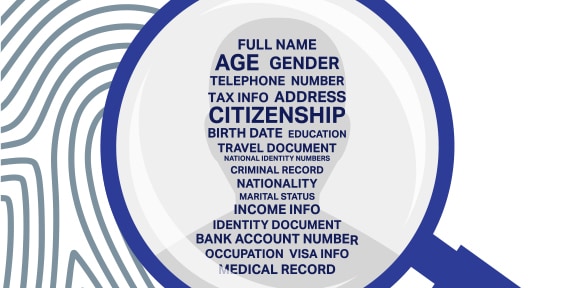
How Advertisers Should Navigate
As mentioned above, when it comes to data privacy and data protection policies, advertisers should prioritize consumers’ safety. In order to establish yourself as a trustworthy brand or company, make sure that you’re complying with all data regulations and are transparent with users about how their information is collected and used.
As long as you’re complying with data protection laws, you still have the same targeting capabilities. Here are some ways of leveraging data to build your brand’s digital presence:
- Create retargeting lists across platforms to follow-up with users who visited the site but didn’t convert, placing a more targeted ad in front of those end-users.
- Leverage compliant 1st party data to inform content development, predictive analytics, addressable advertising, and more.
- Learn and improve your site based on analytics data. If one of your most-visited landing pages has a high bounce rate and a low avg. time on page, work to determine why users are leaving the page, and update the UX to create a better landing page environment.
- Use the data you’ve collected from current users to reach new users who share similar digital attributes, also known as ‘lookalike audiences.’ Create lookalike audiences across paid media platforms such as Google Ads, Facebook, Twitter, and more.
The list can go on and on! But first: make sure your site is compliant, and make sure you’re putting the end user’s safety first.
Bluetext has learned a lot about data protection policies and data privacy over the years. We’re constantly adapting our site to make sure it’s up-to-date to remain compliant with data policies, ensuring consumer data is always safe. Visit our site to learn more about how we have achieved success while remaining compliant. And don’t worry, we won’t collect any data unless you’ve opted in!
Marketing, unfortunately, isn’t an exact science. Nor is there ever a “one size fits all” solution to business objectives. There are hundreds of best practices when it comes to marketing, but sometimes those best practices aren’t the best fit for the goals you’re looking to achieve. To make sure you’re driving the strongest results, you need to test! You can’t optimize for the best results for what you don’t test.
At Bluetext, we are big advocates of A/B testing; we use the tactic across different marketing initiatives – from landing pages, email templates, call-to-actions, banner ads, and everything in between. And by hiring a marketing analytics agency, you can eliminate the guesswork around what tactics are the best fit for your business needs.
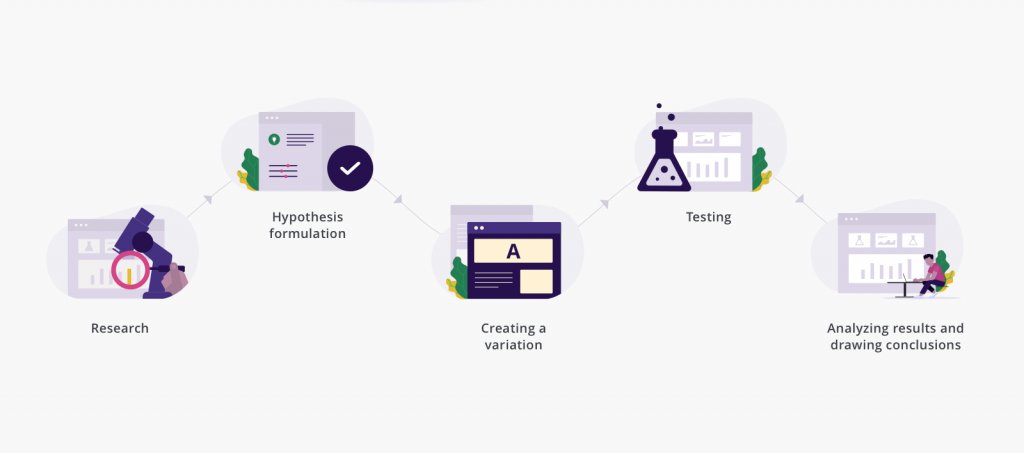
What is A/B Testing?
A/B Testing (also known as split testing) is a simple and effective tactic to use when you want to understand your audience better and improve overall campaign performance. A/B testing is an experiment where two (or more) variants of a specific asset are shown to users at random, and statistics help to determine which variant performs better for achieving your ultimate goal. Users start off with a control asset, and then run a variant alongside the control, measuring results accordingly. Sound familiar? It’s the exact same concept of scientific method you learned in primary school! The only difference is you can turn these stats into real business revenue, not a lab report.
A/B testing takes the assumptions and the ‘best practices’ out of the equation. Marketing, as we mentioned, isn’t an exact science; we don’t know what we don’t know! A/B testing relies on statistical data to help marketers understand and verify what resonates best with their audience.

How A/B Testing Works
A/B testing can be executed in several ways. If you’re running a display ad campaign and want to test animated ads vs. static ads, then perhaps you don’t necessarily have a ‘control.’ You launch both variants at the same time, and once you collect enough data for the test to be statistically significant, you pause the under-performing ad variant.
Alternatively, you may want to improve your landing page conversion rates. In this case, you take your current landing page environment – the control – and change one asset on the landing page; this page becomes your variant. The popular heatmapping landing page tool, Crazy Egg, notes that A/B testing landing pages is useful because it “lets you see what elements really click with your audience and which don’t. Changing just one word in your CTA can reveal nuances about your target audience that you never would have otherwise discovered.”
After your test has reached statistical significance, you have the tools needed to determine whether you should continue to keep your control landing page live, or if you should redirect all traffic to your new landing page.
The most beneficial aspect of A/B testing is that you will receive results: you will end an A/B test with a clear winner, and insights into what resonates more with your audience, arming you with the tools you need to improve your marketing performance.
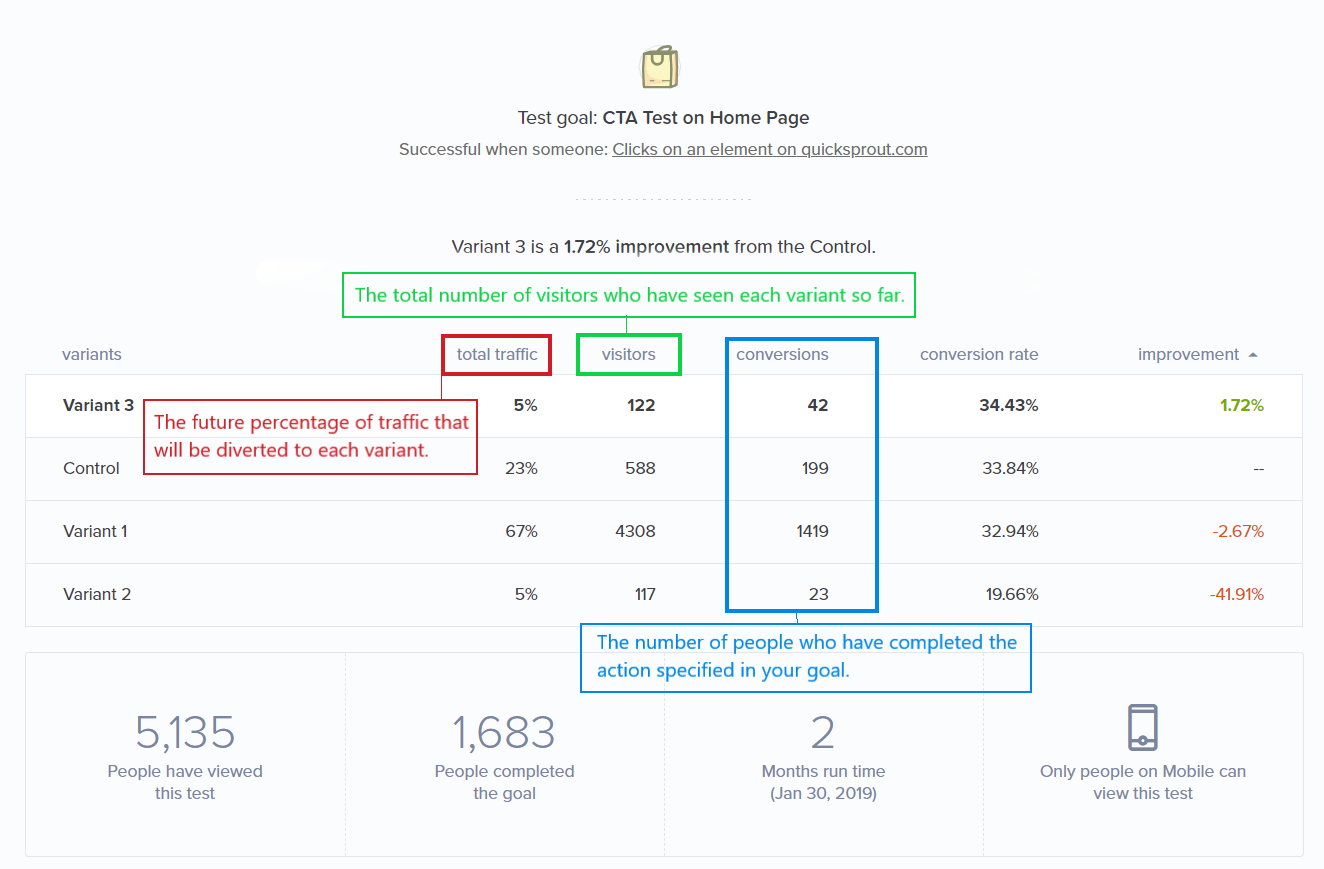
You Have A Winner! Now What?
Once your test has run its course by reaching statistical significance, and you have a clear winner, what’s next?
Implementation to start! Don’t waste any more time – or money – driving users to a lower-converting landing page, or showing underperforming ads to your audience. Take the winner of your A/B test, apply it, and start to see your KPIs skyrocket.
Of course, testing is a marathon, not a sprint. Just because you tested one asset, there are still hundreds – thousands – of other tests you could (and should) run. A/B testing should be an ongoing tactic for your marketing efforts, not a one-and-done completion. Remember: you can’t optimize what you don’t test.

When determining what your next A/B test should be, make sure you’ve analyzed your most recent test, and understand why the winner actually won. What did you learn? Did a new call-to-action boost conversion rate? What did you change in your CTA, and why do you think that minor change helped to increase your conversion rate? If the CTA on that landing page helped to increase conversions, where else could you apply this change?
It’s critical to take time to ask yourself these small questions to help understand the bigger picture. Chances are, you will come away from your latest test analysis understanding your target audience even better, and will have an idea for your next big A/B test.
One thing we can’t stress enough: document your A/B tests! Document the setup, the control and variant, the winner, your analysis – everything. Save it in a safe place. As Medium states, documenting your tests “leads to deeper understanding and context. In turn, that understanding sparks new ideas causes stronger hypotheses, and prevents running similar tests twice.” You will absolutely want to reference previous A/B test documents before jumping into the next!
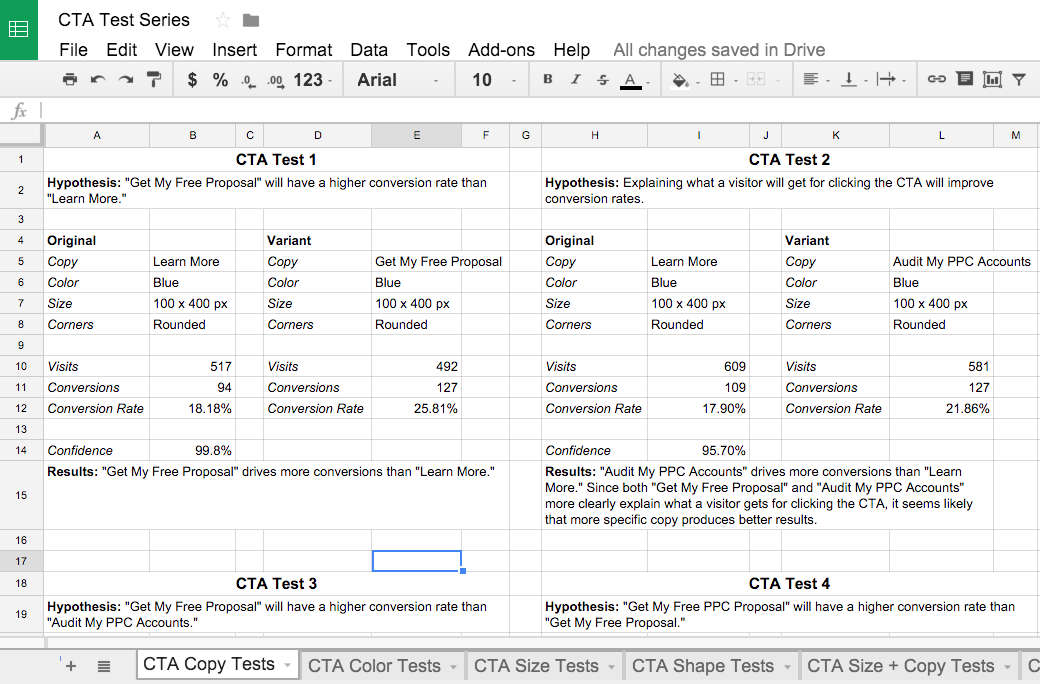
Now that you have an idea of what A/B testing is, how to approach it, and how to expand on your learnings – what will be your next (or first!) A/B test? Learn how Bluetext has helped clients achieve stronger KPIs and boost conversion rates through strategic A/B testing on our site.
It’s no surprise that video has taken the digital ad space by storm. It’s rare that you scroll your newsfeed or surf the web without being served an ad that is relevant to your specific interests. In 2019, 87% of marketing professionals were leveraging video in their media strategies and more than 80% of video marketers saw a stronger ROI than when they ran static banner ads or paid social image ads.
So, why are video ads so popular? And why should marketers continue to invest in video advertising in 2020?
Expanded Inventory
For starters, video inventory is incredibly robust. You can reach users across a variety of different platforms and sites – from social platforms to Connected TV devices. That’s right, you can now tailor ads to reach users while they’re streaming a show through their smart TVs. Marketers can also place video pre-roll ads across premium website inventory, along with video-specific platforms like YouTube, where ads play before or during video content that a user is viewing.
Video ad inventory has expanded across social platforms in the past few years as well, and the results have been significant. Platforms such as Instagram and Facebook see 49% higher interactions on video ads than with image ads. With such impressive engagement metrics, it makes sense that marketers are investing more of their media dollars into paid social video ads. In fact, paid social video ad spend accounted for 28.7% of all video ad spending in 2019 ($10.35 billion). This number is projected to grow to $12.48 billion in 2020.
Unique Ad Formats
The unique ad formats offered through video is another reason why marketers are investing more of their paid media budget into the medium. Sprout Social reports that marketers are increasing their digital video budget by 25% year-over-year due to the increase of new ad formats. For example, marketers are now leveraging Instagram stories to connect with users for :15 seconds through an immersive experience with a full-screen interactive video. In 2019, one-third of Instagram’s most-viewed stories came from businesses, and 20% of those stories drove users to directly message businesses.
Another evolving ad format that businesses are taking advantage of is YouTube’s 6-second bumper ad. YouTube bumper ads are non-skippable, and while quite short, marketers have been able to successfully story-tell through a sequence of these 6-second ads. Google Ads shares that “many large brands are using bumper ads to drive upper-funnel goals like ad recall and awareness…. [they] are a cost-effective way to reach your target audience, ensure your message is seen and heard, and keep you top of mind.”
As mentioned previously, the ability to target users through Connected TV (CTV) devices is a huge win for marketers. There is a shift happening between traditional TV and CTV; many households are ditching cable subscriptions and switching to subscriptions with streaming services such as Hulu, Amazon Prime and Apple TV to get their news and entertainment. By 2022, it’s projected that 35 million viewers will watch TV exclusively through streaming services. The result? Marketers are investing less in traditional TV commercials, and instead, putting those dollars behind non-skippable :15, :30 and :60 second CTV ads. The best part of CTV advertising is that you actually have access to ad data! With traditional TV, networks will provide projected impressions for running commercials during specific time slots; however, with CTV, you’ll know exactly how many users watched your ad, along with viewability metrics and insights into ad recall.
The Future of Video
While banner and image ads have seemingly run their respective courses, the future of video advertising looks promising. With new formats and campaign functions rolling out across platforms specifically for video, marketers should set aside a healthy media budget for testing new video opportunities in 2020.
One new practice that Google Ads recommends is to make your video and search ads work together. Google Ads states that marketers who run search and video together will experience a 45% higher lift in ad recall, and a 180% higher message retention. One brand, in particular, found that running video alongside paid search led to a 4x increase in branded search, and dropped their CPA by 70%.
Another new trend popping up across paid social is the use of live video. Marketers are investing in live video as a means of building trust and transparency with consumers. We’re used to seeing this trend across Instagram and Facebook Stories, and video-first platforms like Snapchat. However, some businesses are migrating live video to LinkedIn to help tell brand stories and to show followers the real people behind the company name. Live video is helping to break down walls and let users connect with businesses in a personal way.
Other new video opportunities coming our way are: shoppable video ads, augmented reality campaigns, new possibilities on IGTV and Facebook Watch, and so much more.
Bottom line: Invest in video advertising in 2020. You’ll be glad you did. Find out how Bluetext has leveraged video ads in successful go-to-market campaigns.
In a world where we are flooded with advertisements and sponsored content every moment of every day, how can you make your ad stand out from the rest? What is going to make a consumer buy your product vs. your competitor’s product if they have the same features and are selling for the same price? Sure, vibrant colors, strong call-to-actions and unique imagery can help, but in order to get the right users to engage with your content and actually convert, you have to go a step – or a few steps – further. The key to marketing success in 2020 is personalization.
In many ways, marketers already know the benefits of personalized ads. For example, we know that digital retargeting ads drive more conversions and have a stronger conversion rate than prospecting ads, merely because retargeting ads are tailored to reach users who have already visited your site. Retargeting ads are more personalized than prospecting ads in nature – we know someone visited the site and expressed interest but didn’t convert, so we use that information to create a new ad with different messaging and a stronger CTA to entice that user to convert. That’s personalized marketing, in its simplest form.
In 2020, personalization is not only growing, but if you don’t take advantage of personalized marketing, your digital ad campaign might fail. Studies show that people are 80 percent more likely to buy something when a brand makes the experience personal. With access to sophisticated technologies such as AI machine learning at our fingertips, marketers are equipped with the tools necessary to tailor ads to personal attributes and behaviors, at scale.
As Martech Advisor states, “AI personalization refers to the categorization of different customer data sets and extracting valuable insights from them. These insights are fed into an automation engine that can take action without human intervention.” In other words, AI machine learning scans a user’s online behavior to understand what type of messaging would resonate best with that end-user. Have you ever visited your Amazon Prime home page to discover several new products that Amazon is recommending for you, that you’ve never seen before? This is AI-based personalization. Amazon’s AI scanned your past user and purchase behavior and introduced you to new products, customizing your home page to match your personal attributes. You’ve likely experienced something similar on music streaming apps – Spotify recommends a playlist for you based on the songs you’re listening to at that point in time.
So – how can you take advantage of personalized marketing? Here are 3 ways you can start to leverage consumer data to customize (& personalize!) your advertising:
- Dynamic Ads – Perhaps the most daunting reason why marketers don’t take advantage of personalized advertising is the assumption that ad creative and targeting processes are manual; however, AI has completely changed the game. Through AI, digital ads can now be dynamically created based on user behavior. We touched on retargeting earlier, but with AI learnings, retargeting efforts have become far more sophisticated. If a user visits a specific white paper or product on your site but does not download or buy, AI can generate an ad for that specific white paper or product and place it in front of that user with tailored messaging. Best of all? This entire process is automated. Gone are the days where your creative team is buried in producing 50 ads in 7 different ad sizes.
- Invest in AI tools for your website – Tools such as AI-powered chatbots or AI engines can shed light on how you can personalize ad campaigns. Chatbots allow users to share data that might not be readily available through other form submissions on the site. The information users provide in a chat is then scanned through AI, producing key insights for marketers to use when forming ad campaigns. For example, if the same pain points or topics continue to surface through chatbots, you might have an idea for your next personalized go-to-market campaign.
- Tailor your campaigns based on audience segments – This sounds simple enough, but more times than not, marketers target all audiences segments under one campaign, rather than breaking up campaigns based on audience segments. For example, you want to target users who play basketball, soccer, football and tennis. You place all of these audience segments under one campaign and serve the same ad and ad copy to each user. Sure, these are similar audience segments in that they are all sports-related; however, a user who plays basketball will likely ‘look’ different than a user who plays tennis. Instead of serving the same ad and ad copy to all users, why not tailor your messaging to each specific audience segment? The more personalized you can get the ad and ad copy level, the more likely your ad will resonate with the end-user and lead to a conversion. Of course, a campaign structure like this that used to be manual has become nearly automated through DSPs and Paid Social platforms that provide ways to streamline this process, freeing up your time and eliminating human error.
In 2020, we challenge marketers to take a step back from the generic go-to-market campaigns and to get personal! How will you use AI-based personalization and machine learning to enhance your digital ad campaigns? Learn how Bluetext has used personalized marketing for our clients’ campaigns, effectively reaching the right audience with tailored, custom creative, via our website.
Programmatic Advertising – No Signs of Slowing Down in 2020
If you spend any time at all surfing the web, you have encountered some form of programmatic advertising. The video ad that plays before you stream your favorite TV show? Programmatic. The banner ad that appears alongside the cooking recipe you’re reading? Programmatic. The sponsored article content that shows up as you’re scanning your favorite news site? You guessed it – it’s programmatic.
Programmatic Advertising – What is it?
Programmatic ad buying is the use of software to purchase digital advertising in real-time, as opposed to the traditional ad buying process that involves RFPs, human negotiations, and manual insertion orders. It allows digital agencies like Bluetext to strategically select where we want to show display, video and native ads, and when.
A huge benefit of programmatic advertising is that the software grants advertisers access to the biggest data providers in the game. Not only are we choosing where and when to show ads online, but we have the capabilities to choose who actually sees our ads. Advertisers are able to hand-select from thousands of audience segments collected by these data providers and layer those segments onto programmatic campaigns.

Why Invest in Programmatic?
While targeting capabilities and ease-of-use are two major benefits of investing in programmatic advertising, there are a number of reasons why digital agencies should hop on the programmatic bandwagon in 2020.
Here are Bluetext’s top 3 reasons for investing in programmatic advertising in 2020:
1. Artificial Intelligence (AI) and Machine Learning
Programmatic advertising already makes digital ad buying easier for advertisers than it ever was before, but AI and machine learning have simplified the process even more. For years, media buyers and digital marketers relied on a manual process to review campaigns, manage budgets, make adjustments to ad creative, and more. However, AI and machine learning have become so sophisticated that the manual days of optimizing are nearly over. Once your campaign has launched, the AI will start to learn what’s working and what’s not, shifting budgets and making adjustments to enhance efficiency in real-time. Studies show that by 2035, AI will boost productivity and profitability by nearly 40%.
As a leading digital marketing agency, Bluetext has seen the benefits of AI and machine learning pay off in major ways. Not only is our digital marketing team more efficient, but the results we were able to drive for clients in 2019 far exceeded their goals. With AI and machine learning only becoming smarter, Bluetext is equipped to reach new heights with programmatic advertising in 2020.
2. Digital Out of Home (DOOH) Opportunities
Digital Out of Home (DOOH) advertising is a unique marketing channel that allows advertisers to reach users outside of their homes in digitally-displayed spaces. Though DOOH media isn’t new, it’s expected to grow exponentially in the coming years. Reports show that between 2016 and 2023, the DOOH media channel will grow from $3.6 Billion to $8.4 Billion.
With the average person spending 70% of their time outside of their home, investing in DOOH in 2020 is a no-brainer. From mobile geofencing to digital billboards, the opportunities to reach people on-the-go are vast. Most importantly, because DOOH is now offered through programmatic platforms, advertisers will have access to significantly more data from DOOH advertising than ever before.
Digital marketing agencies like Bluetext now have the ability to measure results from a digital billboard ad or an animated kiosk through the data and technology programmatic tools provide. Bluetext is looking forward to expanding DOOH capabilities in 2020 to connect the dots from in-home browsing to in-store purchasing.
3. Multi-Channel Advertising
In the past, advertising agencies had to leverage several different platforms, media vendors and direct buys to ensure they reached their audiences across all mediums. Programmatic advertising has simplified this process so that marketing agencies like Bluetext can execute all advertising efforts through one simple-to-use platform.
Programmatic solutions include paid social, display, video pre-roll, native advertising, geofencing, DOOH, connected TV and more. Digital marketing agencies like Bluetext now have the capability to run one digital campaign across all different mediums and – most importantly – track user behavior across all touchpoints. With AI and machine learning, programmatic campaigns will optimize to reach users at the right time on the right medium, whether that’s on the computer, on their smart TV, or in a store on their mobile device. In 2020, it’s expected that even more multi-channel solutions will be announced, such as voice-activated ads powered through devices like Alexa and Siri.

Programmatic advertising has opened the door for digital marketing agencies like Bluetext to effectively run and execute campaigns across a number of channels and mediums, making media dollars more efficient than ever before. With the expansion of programmatic solutions in 2020, there’s no limit to the number of possibilities Bluetext will be able to leverage to drive digital media success for our clients. To learn more about our work with programmatic advertising contact us.